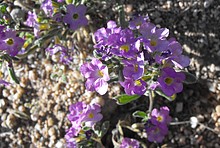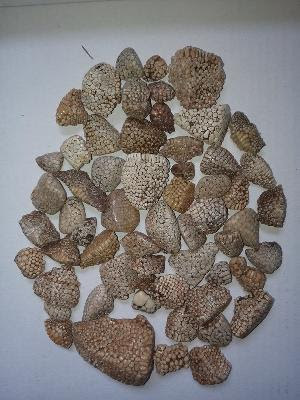Home PageAbout MindatThe Mindat ManualHistory of MindatCopyright StatusWho We AreContact UsAdvertise on Mindat
Donate to MindatCorporate SponsorshipSponsor a PageSponsored PagesMindat AdvertisersAdvertise on Mindat
Learning CenterWhat is a mineral?The most common minerals on earthInformation for EducatorsMindat ArticlesThe ElementsThe Rock H. Currier Digital LibraryGeologic Time
Minerals by PropertiesMinerals by ChemistryAdvanced Locality SearchRandom MineralRandom LocalitySearch by minIDLocalities Near MeSearch ArticlesSearch GlossaryMore Search Options
The Mindat ManualAdd a New PhotoRate PhotosLocality Edit ReportCoordinate Completion ReportAdd Glossary Item
Mining CompaniesStatisticsUsersMineral MuseumsClubs & OrganizationsMineral Shows & EventsThe Mindat DirectoryDevice SettingsThe Mineral Quiz
Photo SearchPhoto GalleriesSearch by ColorNew Photos TodayNew Photos YesterdayMembers' Photo GalleriesPast Photo of the Day GalleryPhotography
╳Discussions
💬 Home🔎 Search📅 LatestGroups
EducationOpen discussion area.Fakes & FraudsOpen discussion area.Field CollectingOpen discussion area.FossilsOpen discussion area.Gems and GemologyOpen discussion area.GeneralOpen discussion area.How to ContributeOpen discussion area.Identity HelpOpen discussion area.Improving Mindat.orgOpen discussion area.LocalitiesOpen discussion area.Lost and Stolen SpecimensOpen discussion area.MarketplaceOpen discussion area.MeteoritesOpen discussion area.Mindat ProductsOpen discussion area.Mineral ExchangesOpen discussion area.Mineral PhotographyOpen discussion area.Mineral ShowsOpen discussion area.Mineralogical ClassificationOpen discussion area.Mineralogy CourseOpen discussion area.MineralsOpen discussion area.Minerals and MuseumsOpen discussion area.PhotosOpen discussion area.Techniques for CollectorsOpen discussion area.The Rock H. Currier Digital LibraryOpen discussion area.UV MineralsOpen discussion area.Recent Images in Discussions

4th Feb 2013 18:21 UTCBob Harman
4th Feb 2013 21:40 UTCNorman King 🌟 Expert
4th Feb 2013 22:28 UTCPaul Brandes 🌟 Manager
A quick acid/vinegar check should tell which it is (if it fizzes, limestone).....

5th Feb 2013 06:05 UTCD Mike Reinke

8th Feb 2013 02:38 UTCcraig johnson
8th Feb 2013 14:22 UTCNorman King 🌟 Expert

8th Feb 2013 20:06 UTCcraig johnson
There is green silty shale looking rock or sediment over this deposit that this rock seems to be grading into, Looks chlorite to me . located in se ohio. The vinegar dissolved a chip of the rock and revealed the magnetite remaining. I used a piece of wire from the twisty tie off from a loaf of bread to check if it suspending (next to the plastic cup) would attract to the remaining especialy the black grains and it pulled and cling to the cup. I could guess this being a chlorite schist but that would be metamorphic and possibly due to contacting igneous . ? This silty shale seems to be very reactive to hydrochloric acid.

8th Feb 2013 21:06 UTCcascaillou
I need to know:
-it seems the rock is compact and homogeneous, and does not feature any visible individual elements (like grains, crystals, blades, fossils, gravels, lamellae, crystalline plates, or any kind contrasting elements) in it's structure. Is that right? I need to confirm that the rock does not feature any visible elements.
-the surface of a fresh fracture of the rock can be scratched by the blade of a penknife (I'm talking of a thin blade pocket knife such as the swiss army knife)? My guess is that it can't but I need confirmation.
-does it react with effervescence (bubbling) to concentrated hydrochloric acid? (dangerous acid, wear protective goggles, if you're a kid ask an adult for help). My guess is that there's no reaction but I need confirmation.
-if finely powdered, does it dissolve (after 24hours) in concentrated hydrochloric acid? My guess is that it doesn't dissolve but I need confirmation.
-does it scratch window glass? My guess is that it does, but I need confirmation.
-what is the specific gravity? My guess is that it is between 2.5 and 2.9 but I'd need some accurate measure.
if every single of my first guesses are right, then that would point either to quartzite, corneenne (aka hornstein, don't know what's the english term for this rock), phtanite, phonolite, andesite(I doubt it, doesn't look like it), or ultramylonite
then to make the difference between those, you need to answer additional questions:
-is it completely opaque (meaning that when strongly backlit, a very thin splinter of the rock is not at all transluscent, not even on its sharp edges)?
-what geological context is the rock from, I mean was it found nearby:
*nearby volcanic rocks?
*nearby sedimentary rocks?
*nearby endegeneous rocks
*or both sedimentary and endegeneous rocks?

8th Feb 2013 23:06 UTCcraig johnson
9th Feb 2013 00:12 UTCNorman King 🌟 Expert
The information you provided is very helpful. I think this is a limestone concretion from a sedimentary rock sequence. The weathered, somewhat curved exterior surface is consistent with that. The uniform (i.e., non-bedded or foliated) structure is consistent with that. Presence of other minerals within the matrix such as iron minerals and clays and possibly other phyllosilicates is also consistent. If the concretion grew displacively, that might produce local concentrations of phyllosilicates having a foliated appearance. Thus, everything you show and describe fits the diagnosis of limestone concretion. Besides calcite, such concretions often contain dolomite, as well as sand, silt, and clay or other phyllosilicate grains.
Good job at coming up with the descriptive information!

9th Feb 2013 00:36 UTCcascaillou
here's a quartzite:
http://www.mii.org/Minerals/Minpics1/Quartzite.jpg
in this case, no individual elements (like grains, crystals, fossils, gravels, lamellae, crystalline plates, or any kind contrasting elements) are seen in the rock structure.
on the other hand, here's a granite: http://www.mineraux-dmarmet.com/decouverte%20du%20monde%20mineral/images/027_granite_du_Mendic.jpg
in this case, the rock is shows different elements, which are crystals (quartz, feldspar and mica crystals).
and here's an oolitic limestone: http://www.northtexasfossils.com/fieldtrips/2009-09-05/2009-09-06-003-800.jpg
here again, the rock shows visible elements which are spheric grains.
here is a basalt which also show different elements (grey, white and black) in its structure:
http://www.volcanol.fr/images/roc/basalte1.jpg
Now here's a corneenne: http://www.crpg.cnrs-nancy.fr/Science/Collection/RepertoirePhoto/0010Corneenne.jpg
->no contrasting elements to be seen in the structure
So, from the picture you posted of your rock, it seems to me that just like quartzite or corneenne, it is homogeneous and no individual elements are seen, but I'm not sure I'm judging it correctly as this is not a close-up pic of the rock (and maybe I'm just not seeing elements because they are very small), which is why I ask you about it.
Just keep in mind that when identifying a rock, every observations and tests must be done from a fresh fracture (which is exposing the inside of the sample).
the presence of crystallisations inside fractures is not the point, the point is what is the general structure of the rock like: is it homogeneous (no contrasting elements) or is it heterogeneous (rock made of contrasted elements). This is an important distinction to be made so to identify a rock.
A close-up picture of the rock texture on a fresh fracture would be quite helful

9th Feb 2013 02:03 UTCcraig johnson
I agree with corneenne - hornfels this rock , your photo a match to my rock.

9th Feb 2013 02:37 UTCcascaillou
9th Feb 2013 03:32 UTCNorman King 🌟 Expert
"Corneene" must mean "hornfels," because "corne" means "horn."
One cannot call a rock hornfels unless it has been established that it was produced by contact metamorphism. Thus, we cannot say this is hornfels, and therefore contact metamorphism occurred there. It is just the opposite: we can only say that after we have found a contact metamorphic aureole, we can say that this rock should be called hornfels. Craig has not found a contact aureole.
(For example, see--http://www.enotes.com/hornfels-reference/hornfels.)
9th Feb 2013 03:47 UTCMatt Neuzil Expert

9th Feb 2013 04:14 UTCcraig johnson

9th Feb 2013 05:04 UTCD Mike Reinke
Mike

9th Feb 2013 12:14 UTCDavid Baldwin

9th Feb 2013 12:35 UTCcascaillou
I suggested two hydrochloric acid tests and two hardness tests. Maybe we'd better stop making shots in the dark and just wait for the results of these tests.

9th Feb 2013 15:55 UTCcraig johnson
Hardness it will scratch glass with pressure but not easy like quartz.
hydrochloric acid will dissolve it in couple days time, a small chip in vinegar dissolved most of the chip and softened the whole chip mushy 1 - 2 days.

9th Feb 2013 16:21 UTCcascaillou
You said acid slowly dissolve it, but does hydrochloric acid provocate almost immediate bubbling (effervescence) too?
also, please watch closely at your rock (on a fresh fracture) and answer my previous question as to wether or not you can see different elements in its structure, or if it is homogeneous with no contrasting elements to be seen in the material?

9th Feb 2013 16:58 UTCDonald Peck

9th Feb 2013 23:22 UTCcraig johnson
I can see small black dots that I think are magnetite because the rock is magnetitc .
Some breaks have a slight different texture like one breaks through the solid and one breaks through where two solids met , foliated in a way ? Even one break through the rock can show both of these types of textured breaks on one piece.
10th Feb 2013 00:06 UTCMatt Neuzil Expert
As said by someone else in the post it looks like limestone concretions. If anyone has been to the blue bridge locality on the huron river in monroeville they know how those concretions are. They are pretty hard to break although they're limestone and look similar to the pieces posted.

10th Feb 2013 00:22 UTCBill Cordua 🌟 Manager

10th Feb 2013 00:58 UTCcraig johnson
I'd like to know how and why this rock is magnetic especialy if its limestone ..I tested another piece of the rock that does not have any irony crust on it , broke this piece out as to not have the iron crust , I hang the rock and sure enough its still magnetic pulling to the magnet. If limestone formed from this sediment of shallow sea or lake which Ohio was known to be before and being sedimentary here then where would it have got magnetite from and yet missing other minerals from sand ? ...I'm not even sure how to ask this question, Biological or Erosional and transported iron deposits, or environment durning the time this limestone placement. Is there some hydrated magnetic iron in this or Why if this is limestone then why magnetic like this ?

10th Feb 2013 15:25 UTCcascaillou

17th Feb 2017 13:29 UTCReiner Mielke Expert
I am intrigued by this magnetic limestone. If you are willing to send me a small piece less than 2cm thick so it can go relatively cheaply as an oversized letter, or less than 5mm thick as a regular letter, I can do some tests on it. Private message me and I will give you my address.
17th Feb 2017 13:35 UTCReiner Mielke Expert
The first looks like a tuff or a piece of concrete. The second like pieces of oolitic limestone like the picture posted by cascaillou in a previous post. Are any of them soluble in acid?

17th Feb 2017 16:48 UTCGeorg Graf
Just a guess. Georg
19th Feb 2017 23:33 UTCGregg Little 🌟
The fact that there may be magnetic detrital material in the rock is not that unusual considering the other insolubles with it (clay and possibly glauconite). Limestone can grade to other sedimentary rocks, as you have alluded to where you stated, "The upper part of this outcrop is more layering and seems to grade into silty layers as would siltstone or shale and that is green".
In a mixed depositional environment you can get silty and sandy limestone or marlstone (clay-rich limestone). It really depends on what the accessories are but to call it a limestone requires the single largest component to be calcite. For example you can have 40% calcite, 30% clay and 30% silt and this is still a limestone although quite unusual. One way of observing the distribution and percentage of insolubles is to acid etch the rock surface (10 minutes?) then flush with water to stop the reaction causing the insolubles to stand in relief and be observable. Observation would require a hand lense or binocular microscope as silt grains are in the 0.0039 to 0.0625 mm size range. If glauconite is also present it is often occurs as tiny pellets and these could also show up in the insoluble residue.
This type of limestone would react quickly at first then slow considerable as the acid has to work past all the insolubles coating the surface of the fragment. The hardness test could be misleading as a higher silt content (usually quartz grains) would give an apparent hardness between calcite and quartz. Like Reiner, I too am intrigued by the rock and would be interested in hearing what you have uncovered, or dissolve out, as the case may be.




Mindat.org is an outreach project of the Hudson Institute of Mineralogy, a 501(c)(3) not-for-profit organization.
Copyright © mindat.org and the Hudson Institute of Mineralogy 1993-2024, except where stated. Most political location boundaries are © OpenStreetMap contributors. Mindat.org relies on the contributions of thousands of members and supporters. Founded in 2000 by Jolyon Ralph.
Privacy Policy - Terms & Conditions - Contact Us / DMCA issues - Report a bug/vulnerability Current server date and time: April 18, 2024 21:04:25
Copyright © mindat.org and the Hudson Institute of Mineralogy 1993-2024, except where stated. Most political location boundaries are © OpenStreetMap contributors. Mindat.org relies on the contributions of thousands of members and supporters. Founded in 2000 by Jolyon Ralph.
Privacy Policy - Terms & Conditions - Contact Us / DMCA issues - Report a bug/vulnerability Current server date and time: April 18, 2024 21:04:25













